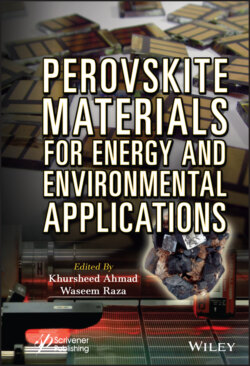Читать книгу Perovskite Materials for Energy and Environmental Applications - Группа авторов - Страница 43
2.5.2 High Open-Circuit Voltage
ОглавлениеThe most distinct property of the PSC technology is their high open circuit voltage, which is the maximum voltage that a solar cell can generate [1]. As from Figure 2.8, we can observe that the best PSC has open circuit voltage greater than 1.1V. The loss-in-potential is around 450 meV, which is quite low. There is energy loss of 250 to 300 meV due to thermodynamic constraints, depending on the bandgap) [34].
Figure 2.8 Open-circuit voltage (Voc) versus optical band gap (Eg). Reprinted with permission from [1]. Copyright {2013} American Chemical Society.
Every data related to GaAs, Si, CIGS, CdTe, nanocrystalline Si (nc-Si), amorphous Si (a-Si), copper zinc tin sulfide/selenide (CZTSSe), organic photovoltaics (OPVs), and DSSCs were provided by the solar cell efficiency tables of Green et al. [35].
CdTe solar cell was the most successful solar cell commercially till 2015 with 19.6% efficiency with losses of approximately 0.59eV. The basic losses of CdTe solar cells are high as compared with perovskites cells [35]. The recombination rate (nonradiative) in perovskite absorber material is lower than polycrystalline film semiconductor [32]. High output voltage is one of the important factors which is responsible for high power conversion efficiency. We know that perovskite is placed in a very good position compared with the other materials for making solar cells. Voltage at maximum power point (Vmpp) is to be considered as the most relevant voltage for considering maximum efficiency [36]. Because of the manufacturing defects, there is high series resistance, which greatly affects the Vmpp. On optimization of solar cells the Vmpp will improve significantly [1].
